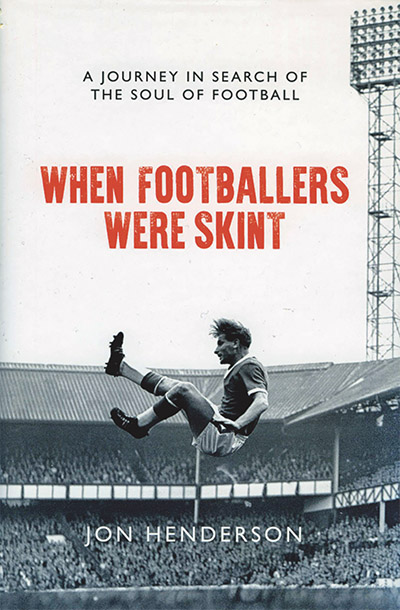
by Jon Henderson
Biteback Publishing, £20
Reviewed by Tristan Browning
From WSC 378, September 2018
Buy the book
In the current climate of super-agents and multi-million pound contracts, football in the immediate aftermath of the Second World War can seem wrapped in cliche: Brylcreemed players lived next door to the fans who cheered them on from the terraces, travelling to the match by bus and carrying their iron-studded boots with them. However, rather than using that comparative description to launch a polemic against today’s stratospheric wages, the title of Jon Henderson’s new book is simply shorthand for the era being remembered. The penury of the players themselves isn’t given undue weight and, with rare exceptions, almost no mention is made of modern financial rewards.
Far more, this book is nostalgia writ large; a fond but matter of fact look back at British football in the first post-war years, leading up to the lifting of the game’s maximum wage in 1961.
Interviewing 23 now-elderly former players whose careers fell into this period, Henderson uses their memories to paint a vivid picture of the hopes and aspirations, trials and tribulations of young men who earned only a few pounds more on the pitch than their fathers had down the pit.
The author, a career journalist, who as a child in the 1950s saw some of the players in the flesh, is an engaging writer and doesn’t let his own voice drown out those of his interviewees. Simply talking to each player in turn could lead to repetition, so instead each chapter is a collection of memories on a common theme, a style that keeps the narrative fresh and clear.
The anecdotes come thick and fast, many of them outlining situations that could never happen today: Scotsman Johnny Paton commuting from his London RAF base every Friday evening in time to appear for Celtic on a Saturday; Blackpool’s 1951 FA Cup finalist Bill Slater travelling home from the game by train, unrecognised by victorious Newcastle fans in the same carriage; Bill Leivers being so angry at not getting his full allocation of cigarettes from the club at Christmas that he effectively refused to play another game for Chesterfield.
The chapter focusing on the robust nature of football at the time contains some particularly hair-raising tales. The rudimentary medical treatment given to Dave Whelan after breaking his leg in the 1960 FA Cup final is enough to make anyone wince, while Henderson finds Coventry striker Colin Collindridge so feisty, even in his mid-90s, that he “could still fall out with himself”.
For all the differences that half a century can make, the overriding feeling from all the men who contributed is a lack of bitterness – low wages didn’t detract from their happiness at succeeding as footballers. As Liverpool midfielder Gordon Milne says in the closing chapter, similar lifestyles brought a closer bond between fans and team, and it was this connection that meant that, while they may have been “skint” in monetary terms, players were far better-off in spirit.